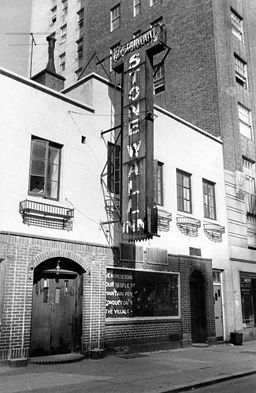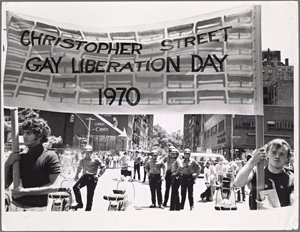The new administration’s “hard-power” budget calls for cutting funding to the Environmental Protection Agency by 31 percent. To many Americans, this is an astonishing new direction. After the passage of the 1970 Clean Air Act and Superfund in 1980, America’s movement toward a cleaner environment has been a fairly steady trudge forward with a couple cha-cha-two-steps-forward-one-step-back. This new approach, however, is a full-on Ginger Rogers, but without the heels. Many may call it quite flat-footed.
The President has given every indication that he is gunning for the EPA, including choosing Oklahoma Attorney General Scott Pruitt who sued over the agency a dozen times to challenge its legal authority to regulate as smog, carbon emissions and mercury pollution, to head the agency.
But on March 2, the Washington Post reported that Pruitt, in a surprising break from character, told the U.S. Conference of Mayors at the Capital Hilton that EPA’s Superfund is “absolutely essential” as is the brownfields program.
Congress enacted the Comprehensive Environmental Response, Compensation, and Liability Act (CERCLA), better known as Superfund, on December 11, 1980. Superfund, the landmark 1980 law, manages the cleanup of some of America’s most contaminated sites and handles environmental emergencies. There are over 1,300 Superfund sites in the country, and thanks to Superfund, most of the cleanups have been paid for by the polluters which are responsible.
Since 1995, the brownfields program uses EPA grants to help communities clean up and return abandoned industrial sites to use.
Pruitt asked the mayors to send him details of their local brownfield program success stories so he could share them with the White House, the Washington Post reported. “We need stories. We need illustrations about how important the brownfields program is to creating jobs and the environmental benefits that have been achieved.”
Former EPA Administrator Gina McCarthy said in a March 2 interview, “The budget proposal that I’ve been reading about is much more extreme than, in fact, I ever thought it would be. It’s such a frontal attack on the people in that agency and, in particular, on the scientists.”
Superfund and Brownfields are popular among lawmakers and their constituents around the country because of their successes, however administration’s budget proposal would shrivel EPA grants down 30 percent and potentially eliminate the brownfields funding completely. Congress would need to approve these cuts, some of which are profoundly unpopular among lawmakers.
Speaking of Superfund, next year will mark 40 years since New York officials declared a State of Emergency in Love Canal, a neighborhood in the city of Niagara Falls, N.Y. after it was revealed that a decommissioned 16-acre landfill, the hidden centerpiece of this tight-knit, working class community, had seeped chemicals into the surrounding neighborhood, sickening of many of its residents.
Remembering Love Canal
The story of Love Canal is a stark reminder of what life was like before the funding, muscle and protections of Superfund were put in place. EPA called the situation in Love Canal “one of the most appalling environmental tragedies in American history. Culminating from this environmental disaster, federal government would pass the landmark Superfund law.

Love Canal protest. Source: EPA
In the 1940’s, the Niagara Power and Development Company granted permission to Hooker Chemical Company to dispose its large quantity of chemical waste into the Love Canal, a mile-long excavation unused canal partially filled with water. Hooker eventually bought the canal from the city converted it into a 16-acre landfill, dumping 21,800 tons of chemicals, including dioxin, into the landfill.
The Niagara Falls School Board purchased the property from Hooker in 1952 in order to construct a new school, and in 1955, the 99th Street School opened. Shortly after, 800 private houses and 240 low-income apartments were built.
A severe winter storm in 1977 significantly raised the water table and the elevation of dioxins, causing eruptions in backyards.
Over 80 compounds were detected from oozing basements walls in many of the homes adjacent to the canal and air samples from them revealed unacceptable levels of toxic vapors.
Laboratory analyses of soil and sediment samples from canal indicated the presence of more than 200 distinct organic chemical compounds and numerous other chemicals and toxic materials including benzene, chloroform, toluene, Dioxin, and various kinds of PCB had seeped through the ground.

‘Danger, Hazardous Area’ sign as seen through chain link fence at Love Canal containment zone Source: EPA historical website
Although the homes closest to the canal were purchased by state giving those residents the financial ability to leave the area, residents outside that inner ring were unable to sell their houses due to the stigma of contamination so they were unable to move away.
“I can tell you from first-hand experience that living in a toxic environment, with little hope of getting out, is a family’s worst nightmare. In 1978, I lived with my two small children at Love Canal in Niagara Falls, NY, where 20,000 tons of toxic chemical wastes were buried,” wrote local resident Lois Marie Gibbs. “My daughter had a rare blood disease, and my son suffered from many medical problems including with his liver, asthma and epilepsy. Our house was worthless, and our American dream taken away through no fault of our own.”
Relief came when Congress enacted Superfund in 1980, which granted broad Federal authority to respond directly to the release of hazardous substances that pose a public health or the environmental threat. The Love Canal was the first site added to its National Priorities List (NPL) of sites with priority in cleanup.
The Superfund Act contained a retroactive liability provision which held Occidental Petroleum liable for cleanup of the waste despite it following all applicable U.S. laws at the time of disposal. In 1995, Occidental settled to pay restitution of $129 million, and from that federal lawsuit came funding for a $3.5 million for a state health study.
According to Gibbs, the city of Niagara Falls, which had 47 chemical facilities at the time, did not rise to the occasion when the news broke. The city did not want to rock the boat with the industry, as it was suspected that there were many sites like Love Canal in the region. Cities and towns which are “company towns” often do not hold their polluters responsible, and community leaders looking for help find that their only recourse is EPA.
“The EPA was designed to provide a safety net for these communities. But it has been hard enough for EPA to answer demand for their services across the nation, and to stretch their existing budgets. Clearly, Trump’s administration intends to take away this safety net, and a means for checks and balances,” wrote Gibbs.
“I am old enough to remember the black smoke of the steel mills, the rivers catching fire and sickness and death in communities that surround the factories. The magnitude of the cuts proposed by this administration will take America back decades.”
Categories: ENVIRONMENT







Spent Number of Years on Superfund Projects In New Jersey & Florida…..Trump and His gang continue the 40 Years of neglect on this problem that has killed thousand of American Citizens….EPA Has been Training Agency for Lobbyists to Protect Toxic Spill Corporations………
LikeLike